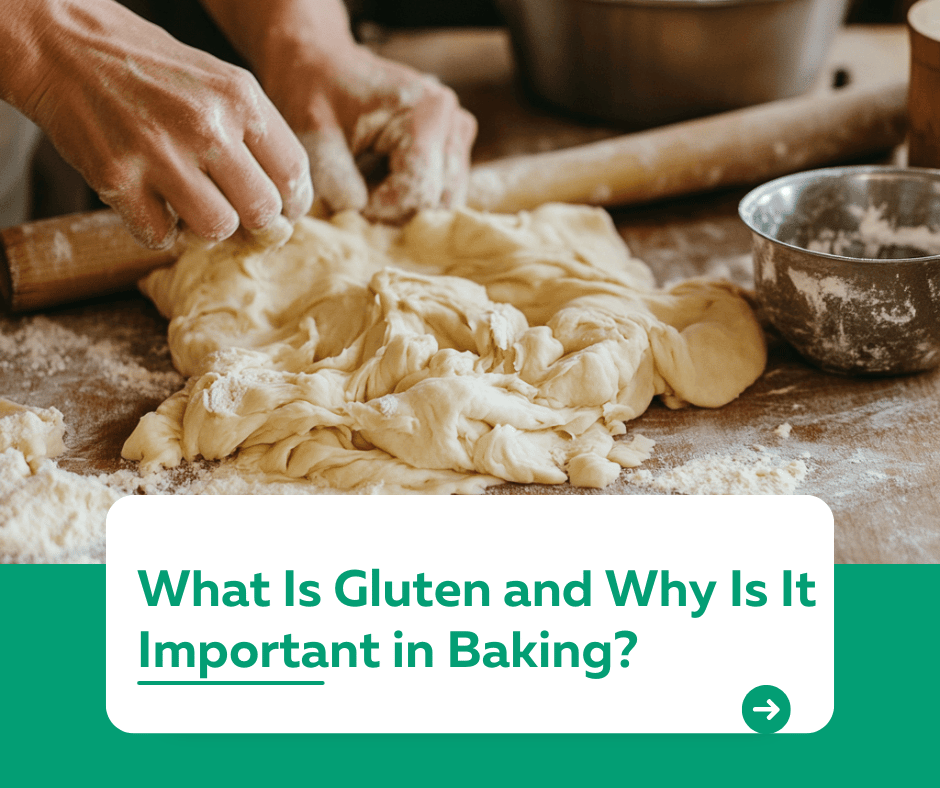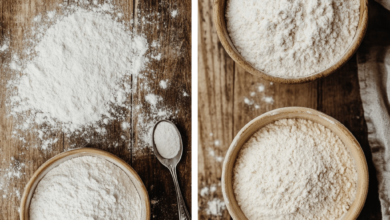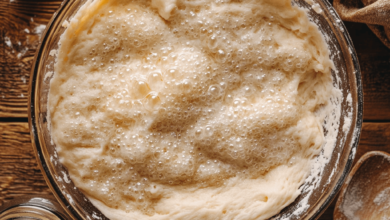What Is Gluten and Why Is It Important in Baking?

Introduction
“What is gluten, and why does it matter in baking?”
Gluten is a protein found in wheat and related grains like barley and rye. It plays a crucial role in baking by giving structure, elasticity, and texture to doughs and batters. Whether you’re kneading bread dough or mixing cake batter, understanding gluten can help you achieve the perfect bake every time.
1. What Is Gluten?
Gluten is a combination of two proteins, glutenin and gliadin, found in wheat and other grains.
- How It Works:
- When water is added to flour, glutenin and gliadin combine to form gluten.
- Kneading or mixing strengthens this gluten network, creating elasticity and structure.
- Role in Baking:
- Provides strength and stability to dough.
- Traps gases produced by yeast, helping dough rise.
- Creates the chewy texture in bread and the soft, airy crumb in cakes.
2. Why Is Gluten Important?
Gluten is essential for many baked goods, affecting their texture, structure, and appearance:
- Bread: Gluten creates a strong network that traps gases, giving bread its chewy texture and rise.
- Cakes and Pastries: Provides a delicate structure, but too much gluten can make them tough.
- Pizza Dough: Elasticity from gluten allows for stretching without tearing.
3. Factors That Affect Gluten Development
Several factors influence how gluten forms and behaves in dough:
- Type of Flour:
- High-protein flours like bread flour create more gluten.
- Low-protein flours like cake flour produce less gluten for tender baked goods.
- Kneading and Mixing:
- Kneading strengthens gluten, ideal for bread.
- Overmixing in cakes or muffins can lead to toughness.
- Hydration:
- Water is essential for gluten formation.
- Too little water prevents proper gluten development; too much can weaken the structure.
- Resting the Dough:
- Resting allows gluten to relax, making the dough easier to shape.
4. Gluten-Free Alternatives
For those with gluten intolerance or celiac disease, gluten-free baking relies on alternative flours and binders:
- Common Gluten-Free Flours: Almond, rice, coconut, and oat flours.
- Binders: Xanthan gum or guar gum is often added to mimic gluten’s elasticity.
Tip: Gluten-free baking requires different techniques to achieve structure and texture.
Conclusion
Gluten is the backbone of many baked goods, providing the structure and texture that define their quality. By understanding how gluten works and the factors that influence its development, you can master the art of baking, whether working with traditional flours or exploring gluten-free alternatives.
For more baking tips and insights, visit our Kuestion.com.




